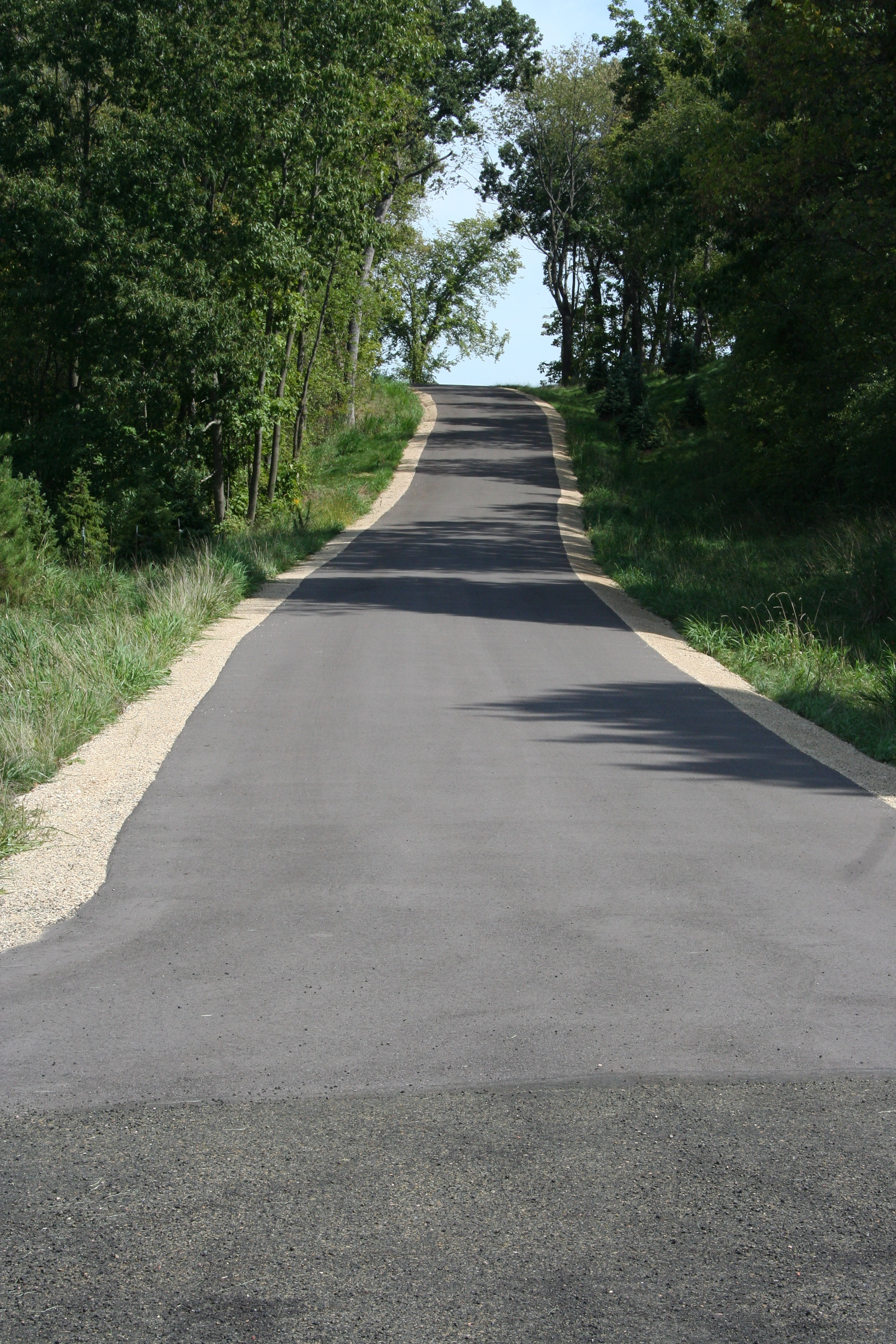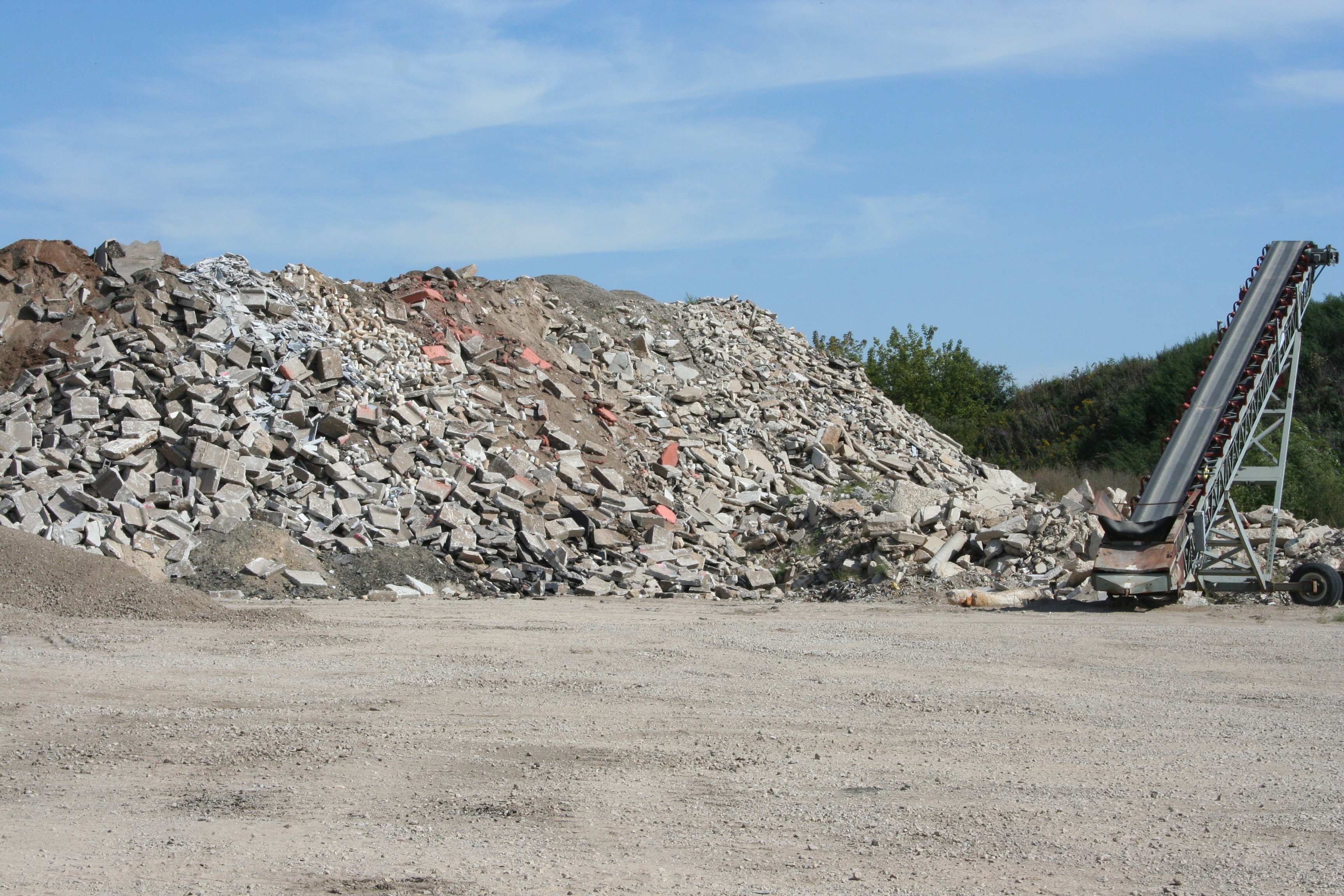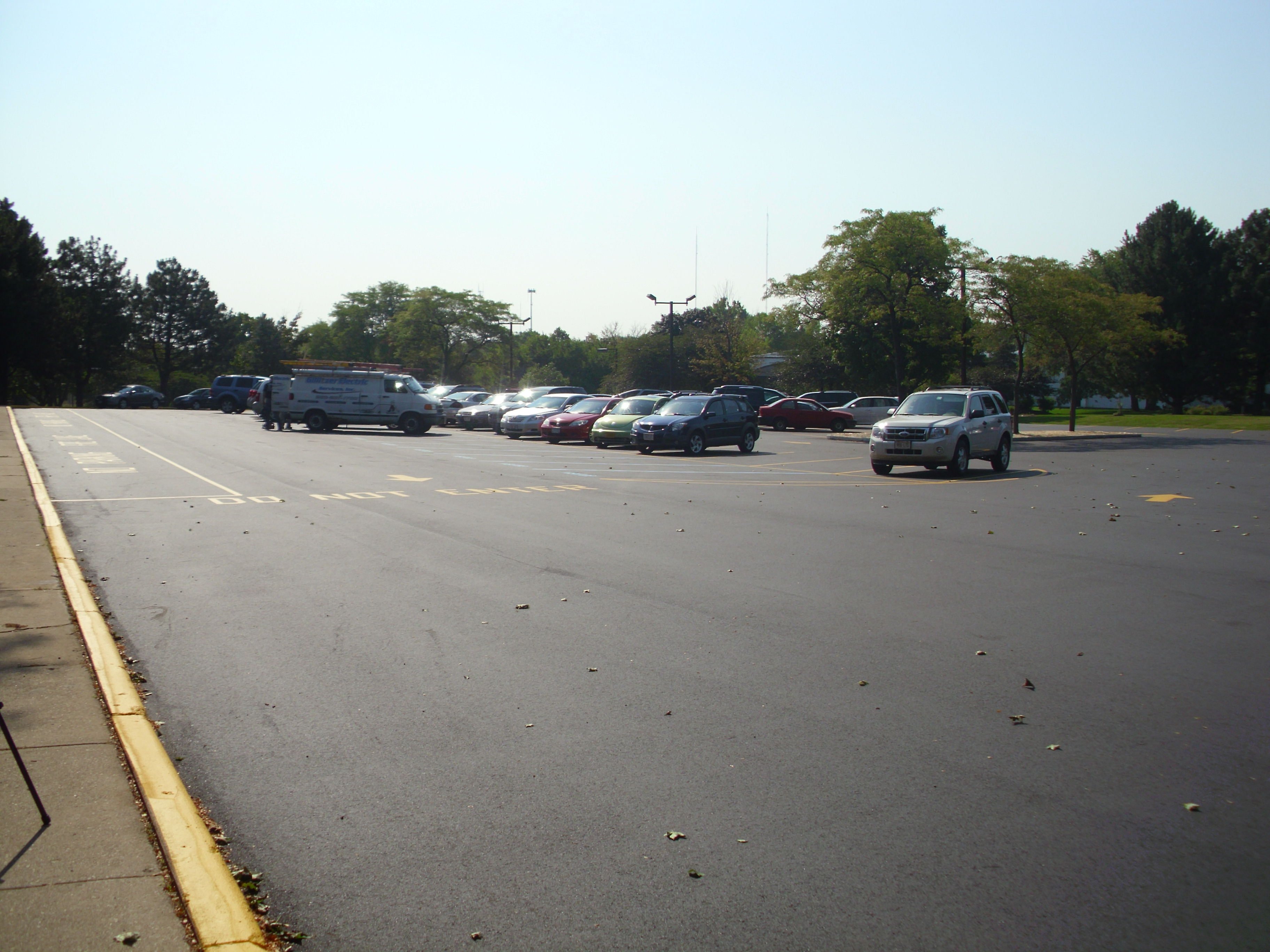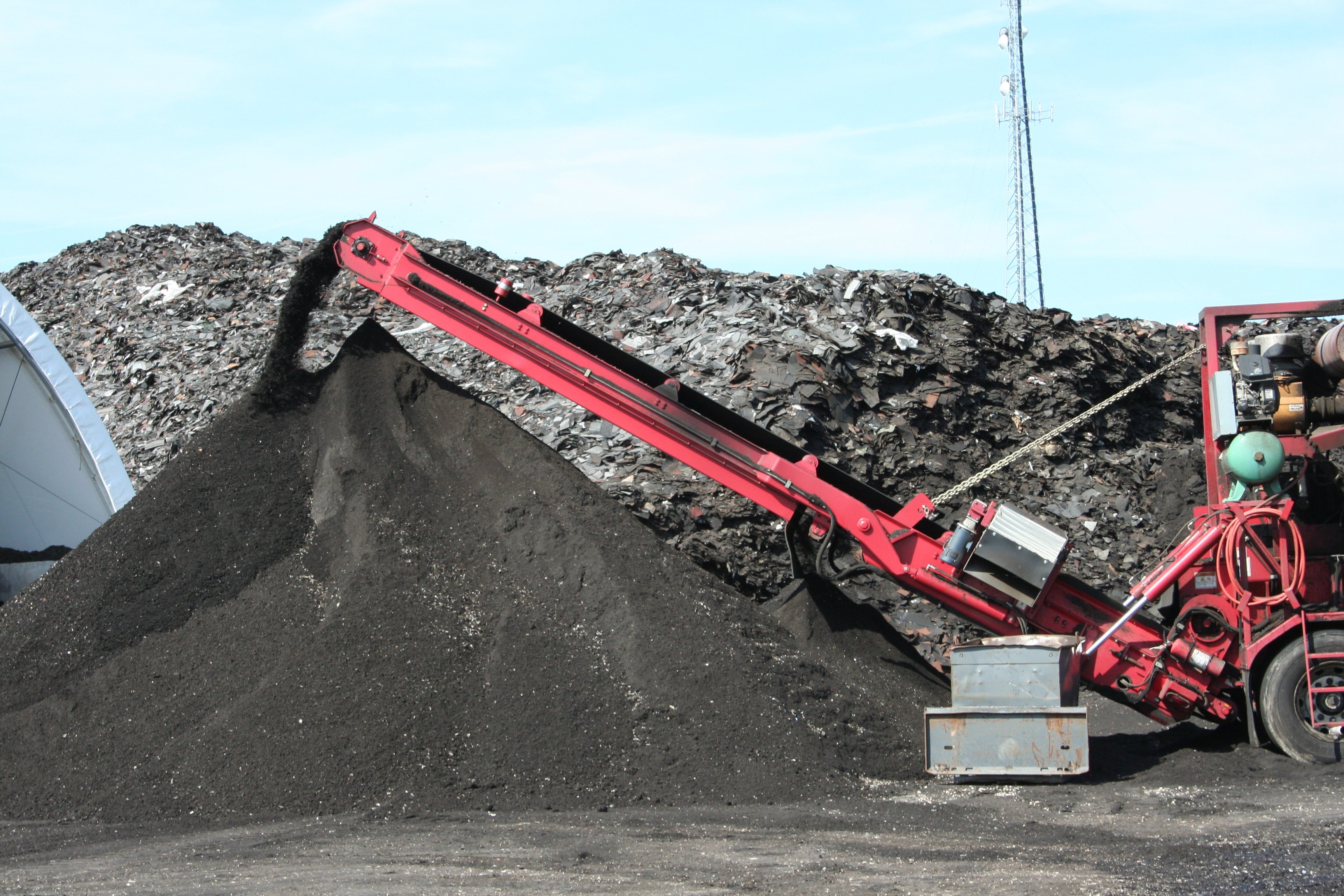The Base/Subgrade Stabilization Project
The project starts at 8:00 a.m. on the dot at Glen Hills Middle School. The semi truck carrying the load of cement powder rolls in. About half an hour later, the cement powder starts getting laid over the parking lot that has had the asphalt parking lot that was here pulverized. At this point, all that’s left is the pulverized asphalt and gravel bed mixture. Now, every square foot gets an application of cement powder at a depth of around 1.5-2” depending on site conditions the day of work.
At 8:55 a.m., the pulverizer starts following behind the cement powder truck. The pulverizer goes 14” into the existing base material, mixing the powder with the existing base material. Once the two are mixed together, the concrete powder starts reacting, hardening the stabilized base components. It is also at this time that the newly mixed stabilized base is tested for the right moisture. To check for this, a ball of the stabilized base is made and it should fall apart after being bounced in a hand.








